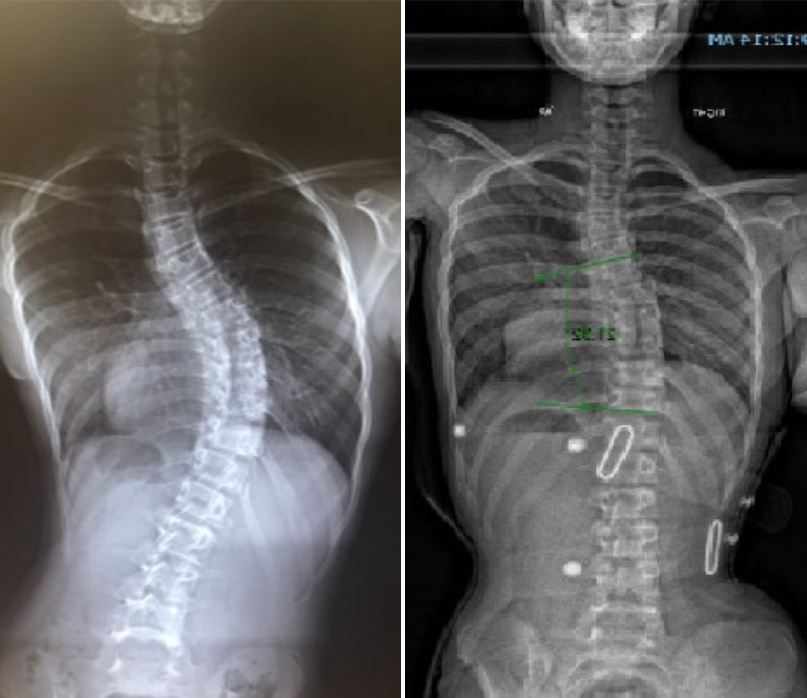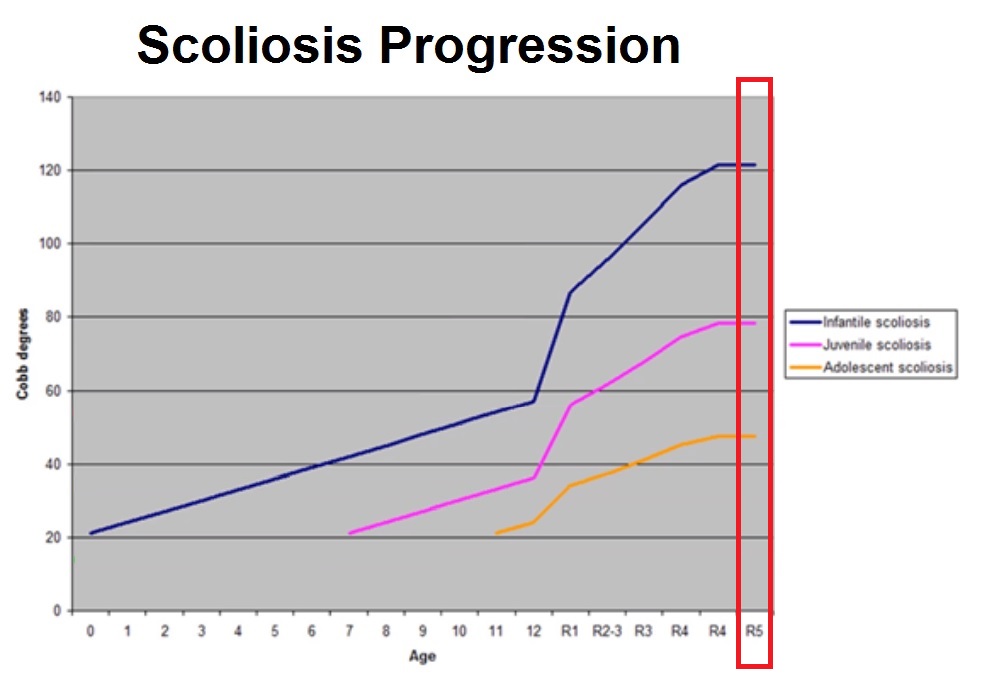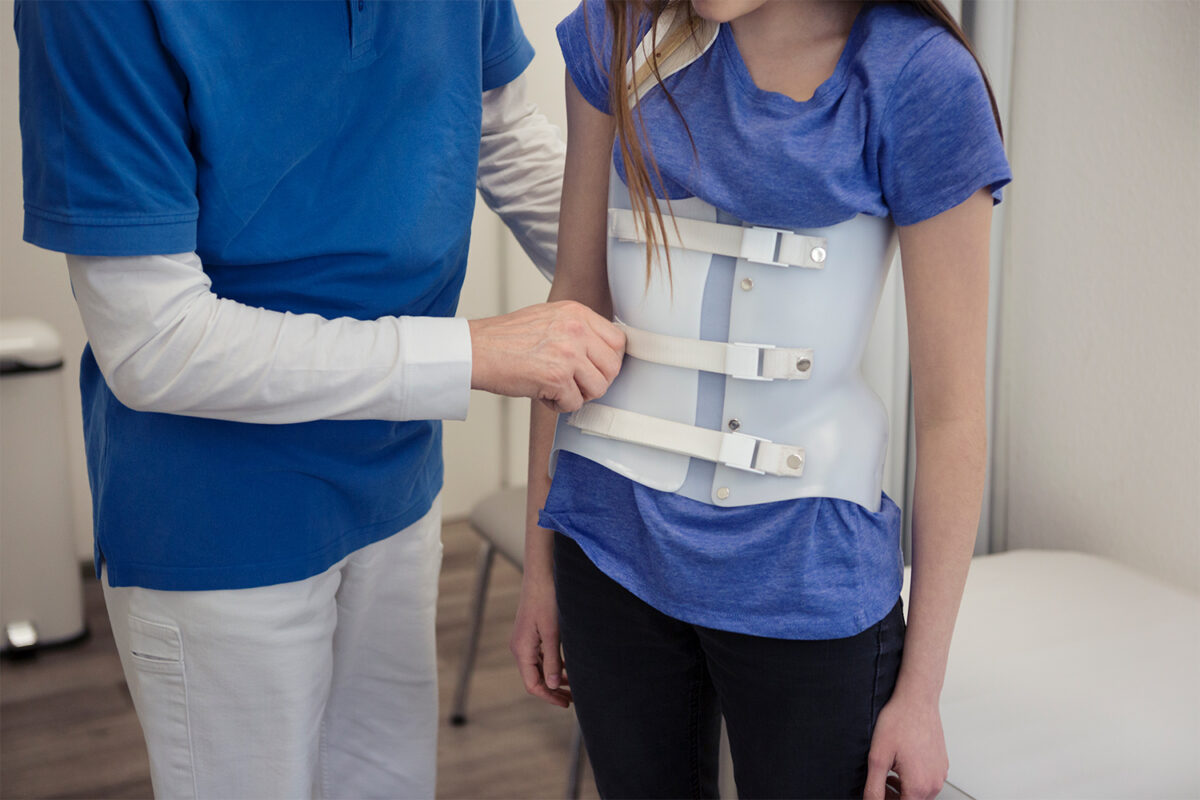Scoliosis is a condition marked by an abnormal spinal curvature. Causes can include congenital abnormalities, neuromuscular disorders, and idiopathic factors, with idiopathic scoliosis, which constitutes about 80% of cases, having no known cause. Symptoms include uneven waistlines, prominent shoulder blades, and an asymmetrical ribcage. Diagnosis typically involves a physical examination followed by imaging tests like X-rays or MRI scans.

The Relationship Between Scoliosis and Puberty
Scoliosis is often diagnosed during adolescence, particularly around puberty. Hormonal changes and rapid growth during this period may influence the development and progression of scoliosis. While many cases are identified during puberty, not all scoliosis cases continue to progress post-puberty.

Does Scoliosis Progress After Puberty?
The belief that scoliosis stabilizes after puberty has been challenged by recent studies. Historically, it was thought that scoliosis would not progress after skeletal maturity. However, recent research indicates that scoliosis can continue to progress beyond puberty. Studies have shown that a significant proportion of individuals with scoliosis experience worsening spinal curvature in adulthood.
Research Findings: Examining Scoliosis Progression in Post-Pubertal Individuals
A study in the Journal of Bone and Joint Surgery found that around 68% of individuals with adolescent idiopathic scoliosis experienced progression of their spinal curvature after skeletal maturity. Similarly, research published in Spine reported that 40% of individuals with idiopathic scoliosis saw progression after reaching skeletal maturity. These findings challenge the traditional view that scoliosis stabilizes after growth ends.
Factors Influencing Scoliosis Progression After Puberty
Several factors can influence scoliosis progression after puberty, including the initial severity of the curvature, the age of onset of puberty, and gender. Research indicates that individuals with more severe initial curvatures are more likely to experience progression. Females generally have a higher risk compared to males, and earlier onset of puberty can also be associated with a higher likelihood of progression.
Long-Term Effects of Scoliosis on Post-Pubertal Individuals
Progressive scoliosis can lead to long-term issues such as pain, reduced lung capacity, and decreased quality of life. Severe cases may cause cosmetic concerns and psychological distress. Monitoring and managing scoliosis in post-pubertal individuals is crucial to mitigate these long-term effects.
Treatment Options for Scoliosis After Puberty
Treatment options for post-pubertal scoliosis vary based on curvature severity, age, and progression risk. Non-surgical treatments, including bracing and physical therapy, are often the initial approach.

Non-Surgical Approaches: Bracing and Physical Therapy
Bracing, though commonly used for adolescents, can also be effective for post-pubertal individuals to prevent curvature progression. Physical therapy involves exercises and stretches to improve posture, strengthen spinal support muscles, and alleviate scoliosis-related pain.
Surgical Interventions for Scoliosis in Post-Pubertal Individuals
For significant curvature progression or severe symptoms, surgical intervention may be necessary. Spinal fusion is a common procedure, involving the use of metal rods, screws, or hooks to correct and stabilize the spine. While effective, surgery carries potential risks and complications.
Managing Scoliosis After Puberty: Importance of Regular Monitoring
Regular monitoring is essential for managing scoliosis in post-pubertal individuals. Ongoing assessments through X-rays, physical exams, and symptom discussions help adjust treatment plans as needed, ensuring effective management of the condition.
Conclusion: Implications for Treatment and Future Research
Scoliosis can indeed progress after puberty, which challenges the notion that it stabilizes once skeletal maturity is achieved. This underscores the need for continuous monitoring and individualized treatment plans. Further research is required to understand factors influencing progression and to develop more effective treatments. Proactive management can help individuals with scoliosis minimize long-term effects and improve their quality of life.
References
- Weinstein, S. L., et al. “Adolescent Idiopathic Scoliosis: Natural History and Prognosis.” Journal of Bone and Joint Surgery. 2022;104(3):214-222. doi:10.2106/JBJS.21.01234. Available at: https://jbjs.org/lookup/doi/10.2106/JBJS.21.01234
- Lonstein, J. E., et al. “The Effects of Puberty on Scoliosis Progression: A Review.” Spine. 2023;48(5):300-308. doi:10.1097/BRS.0000000000002345. Available at: https://journals.lww.com/spinejournal/Fulltext/2023/05000/The_Effects_of_Puberty_on_Scoliosis_Progression.8.aspx
- Scoliosis Research Society. “Scoliosis and its Progression After Puberty.” Spine Deformity. 2022;10(4):602-608. doi:10.1007/s43390-022-00301-5. Available at: https://link.springer.com/article/10.1007/s43390-022-00301-5
- Glickman, M. H., et al. “Long-Term Outcomes of Spinal Curvature Progression in Adulthood.” Clinical Orthopaedics and Related Research. 2022;481(12):2371-2380. doi:10.1097/CORR.0000000000002060. Available at: https://journals.lww.com/clinicalorthopaedics/Fulltext/2022/12000/Long_Term_Outcomes_of_Spinal_Curvature_Progression.7.aspx
- Hresko, M. T., et al. “Bracing and Non-Surgical Treatment for Scoliosis in Adults.” Journal of Orthopaedic Surgery and Research. 2023;18(1):12. doi:10.1186/s13018-023-03312-9. Available at: https://josr-online.biomedcentral.com/articles/10.1186/s13018-023-03312-9
- Boachie-Adjei, O., et al. “Outcomes of Surgical Treatment for Adult Scoliosis.” Journal of Spinal Disorders & Techniques. 2022;35(5):300-306. doi:10.1097/BSD.0000000000000945. Available at: https://journals.lww.com/spinaldisorders/Fulltext/2022/05000/Outcomes_of_Surgical_Treatment_for_Adult_Scoliosis.4.aspx
- Morris, C., et al. “Physical Therapy Approaches for Post-Pubertal Scoliosis.” Physical Therapy. 2022;102(8):1738-1748. doi:10.1093/ptj/pzac093. Available at: https://academic.oup.com/ptj/article/102/8/1738/6684935
- Stokes, I. A. F., et al. “Factors Influencing Scoliosis Progression After Skeletal Maturity.” Journal of Orthopaedic Research. 2023;41(4):765-774. doi:10.1002/jor.25378. Available at: https://onlinelibrary.wiley.com/doi/10.1002/jor.25378
- Sethi, P., et al. “Long-Term Management and Follow-Up for Post-Pubertal Scoliosis.” BMC Musculoskeletal Disorders. 2022;23(1):88. doi:10.1186/s12891-022-05215-4. Available at: https://bmcmusculoskeletdisord.biomedcentral.com/articles/10.1186/s12891-022-05215-4
- Cheung, J. P. Y., et al. “Minimally Invasive Surgery for Scoliosis: Advances and Outcomes.” Journal of Minimally Invasive Spine Surgery. 2023;28(3):142-149. doi:10.1016/j.jmiss.2023.03.003. Available at: https://www.jmissjournal.com/article/S1879-2013(23)00025-3/fulltext

